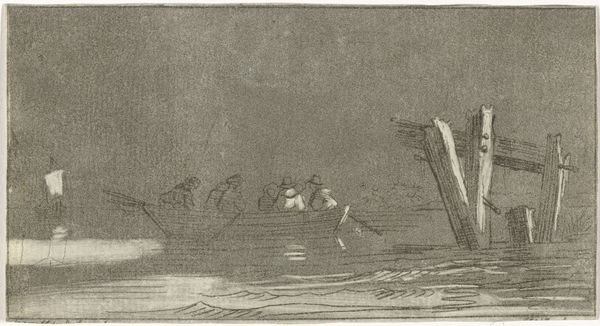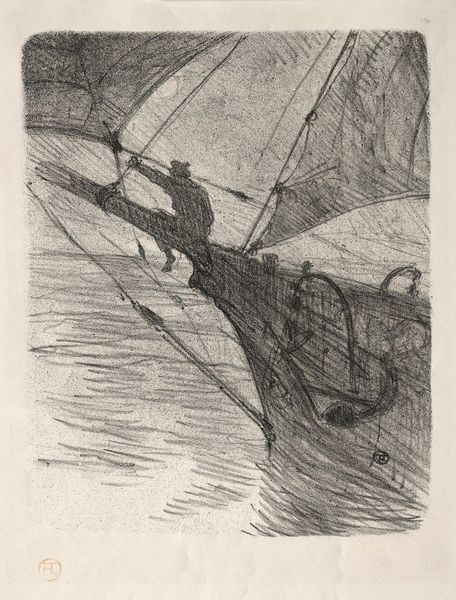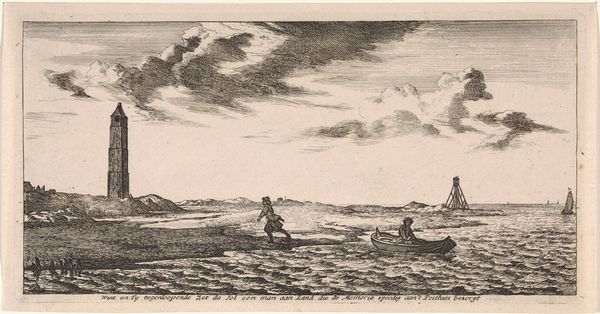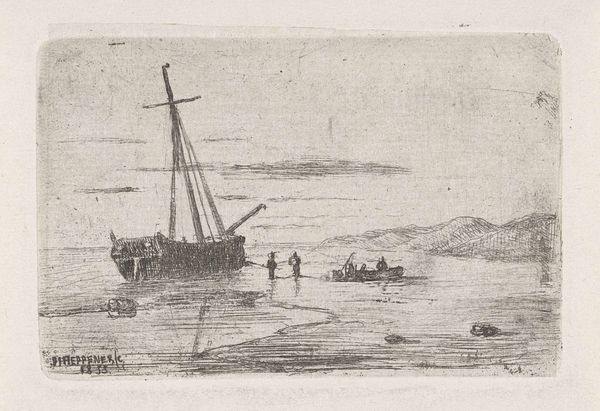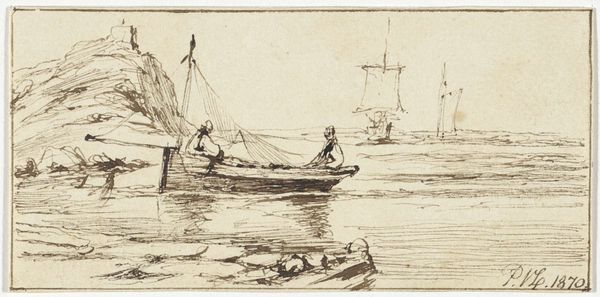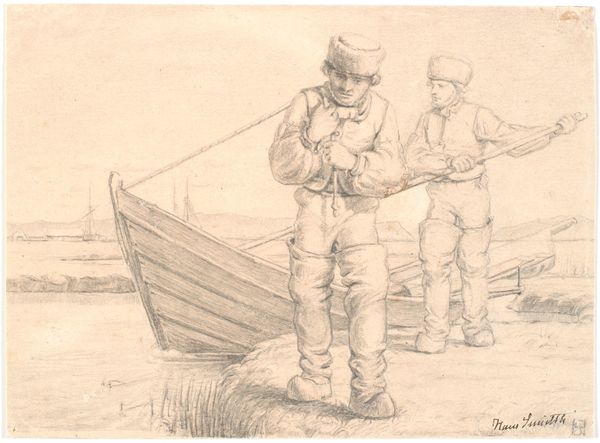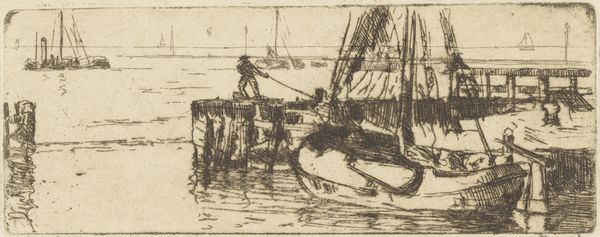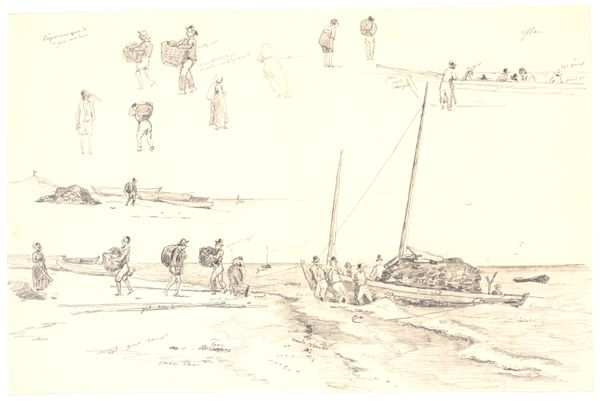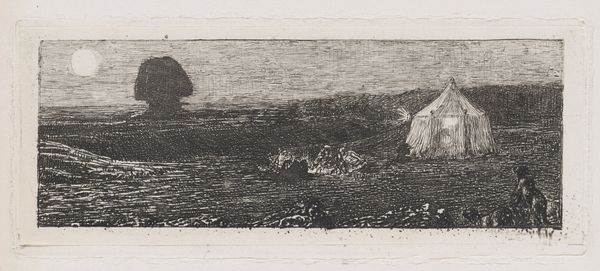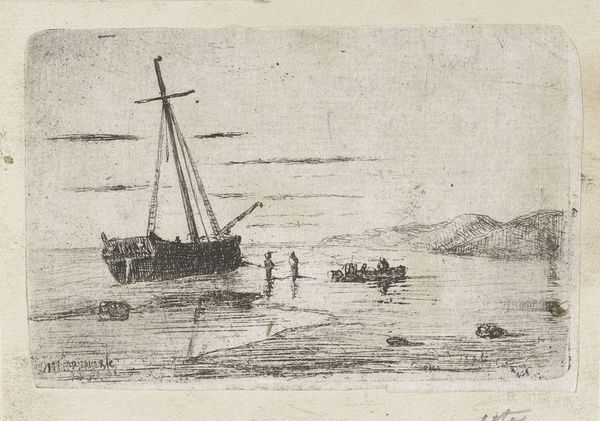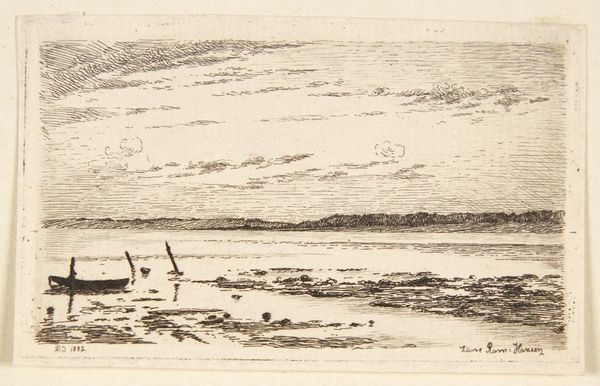
drawing, print, etching, ink
#
drawing
#
ink drawing
# print
#
impressionism
#
pen sketch
#
etching
#
pencil sketch
#
landscape
#
figuration
#
ink
#
genre-painting
Dimensions: height 51 mm, width 106 mm
Copyright: Rijks Museum: Open Domain
Editor: This is "Boot met drie vissers," or "Boat with Three Fishermen," by Arnoud Schaepkens, created sometime between 1855 and 1904 using etching, ink, and print. The limited detail and subtle gradations of tone give the scene a sense of quiet solitude. What compositional elements stand out to you? Curator: The composition hinges on the dynamic interplay between the three figures and the implied movement of the water. The stark contrast between the dense, dark foreground and the lightly sketched background establishes a compelling sense of depth, doesn't it? How do you read the relationship between the lines representing the water and the placement of the fishermen? Editor: It seems like the men are part of the landscape, their forms echoing the horizontality of the water. Is that intentional, do you think, this melding of figure and ground? Curator: I find that the near symmetry draws my attention. Observe how the artist has positioned them across the plane. We could read this not simply as representational, but as a study of visual equilibrium and rhythm. This measured arrangement encourages prolonged looking. Note also the expressive quality inherent in the marks made to delineate the sky, figures and landscape. Does this variance create or distract from overall composition? Editor: That's interesting! It does add a kind of visual texture. The slightly off-kilter perspective also gives it a unique feeling. I didn't notice how the lines change, creating contrasting feelings, which seems intentional now that I look at it that way. Curator: Indeed. These observations speak directly to the aesthetic and material qualities of this printed drawing. It invites close scrutiny. We come to see this work primarily through our senses; that seeing offers knowledge of artist’s approach to line, depth and form within this printmaking medium. Editor: That emphasis on careful seeing of forms offers me a new method of inquiry! Thanks.
Comments
No comments
Be the first to comment and join the conversation on the ultimate creative platform.
